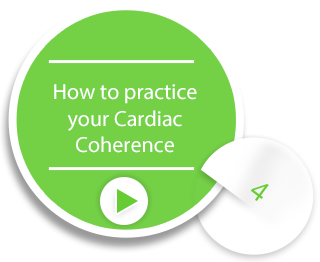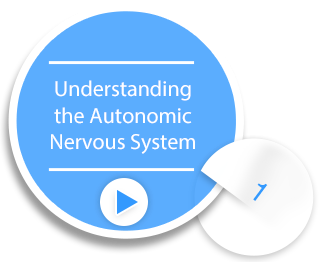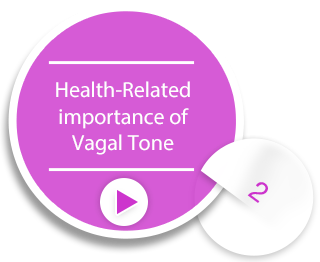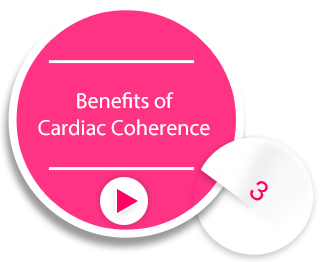
How to practice ?
Generalities
- Induce a very slow, full and very regular breathing: around six breath cycles per minute.
- Focus on the 2 breathing actions and ideally lengthen the expiration time.
For example, follow a rhythm of 4.5 seconds of inspiration followed by 5.5 seconds of expiration for a 6 bcm cycle. - Don’t force your breathing: you should not fill up your lungs completely when inhaling nor emptying them completely when exhaling. In fact a respiration that is too deep could trigger fainting spells. If this happens stop breathing deeply and get back to a normal breathing rhythm.
- Privilege diaphragmatic breathing (abdominal breathing).
Do a breathing exercise by putting a hand on your abdomen and another on your chest; breath by filling up your abdomen while trying not to move your chest, the hand on your abdomen should rise higher than the one on your chest. Thus, you can become aware of the difference between chest breathing and abdominal breathing, which you will privilege during your cardiac coherence exercises. - Center your attention on the cardiac coherence index and try to improve and maintain your score.
This score will vary and cannot be set at the same level at all times. This is normal and several normal factors will influence it. Accept it, do your exercise without stressing. Remember this is a training exercise and concentrate on the results. This is the most efficient manner to improve your cardiac coherence by focusing your attention on the screen. - Regular practice
The common duration of therapeutic protocols is generally over a period of 8 weeks, with 5 to 10 minutes of practice, once to twice a day.
The three training steps
Step 1 :
Step 2 :
Step 3 :
| Why | Become aware of the possibilities of controlling one’s psycho-physiological reactions and regulate them by reaching cardiac coherence. |
| How | Practice the respiratory exercises around the optimal frequency of 6 bcm in order to synchronize the breathing, blood pressure and heart rate. |
| Why | Learn to associate attentional awareness and psychophysiological calm via the cardiac coherence. |
| How | Maintain your cardiac coherence by doing positive attentional focus exercises, for example, remembering a pleasant life experience or enjoyable body sensation. |
| Why | Learning to stop negative emotions induced by remembering unpleasant situations. |
| How | Establishing a list of stressing situations in increasing order of intensity, and practice cardiac coherence for each of them progressively (exposure). |
This project have received the support of :

SYMBIOFI brings to the market innovative solutions for managing stress and anxiety through cardiac coherence and relaxation. SYMBIOFI mobilizes advanced technologies which provide novel solutions for psychoeducation of stress and self-help therapy approaches.
SYMBIOFI
Parc Eurasanté
70 rue du docteur Yersin
59120 LOOS
France
Tel : 03 28 55 51 19 contact@symbiofi.com
www.symbiofi.com
Quick links :





